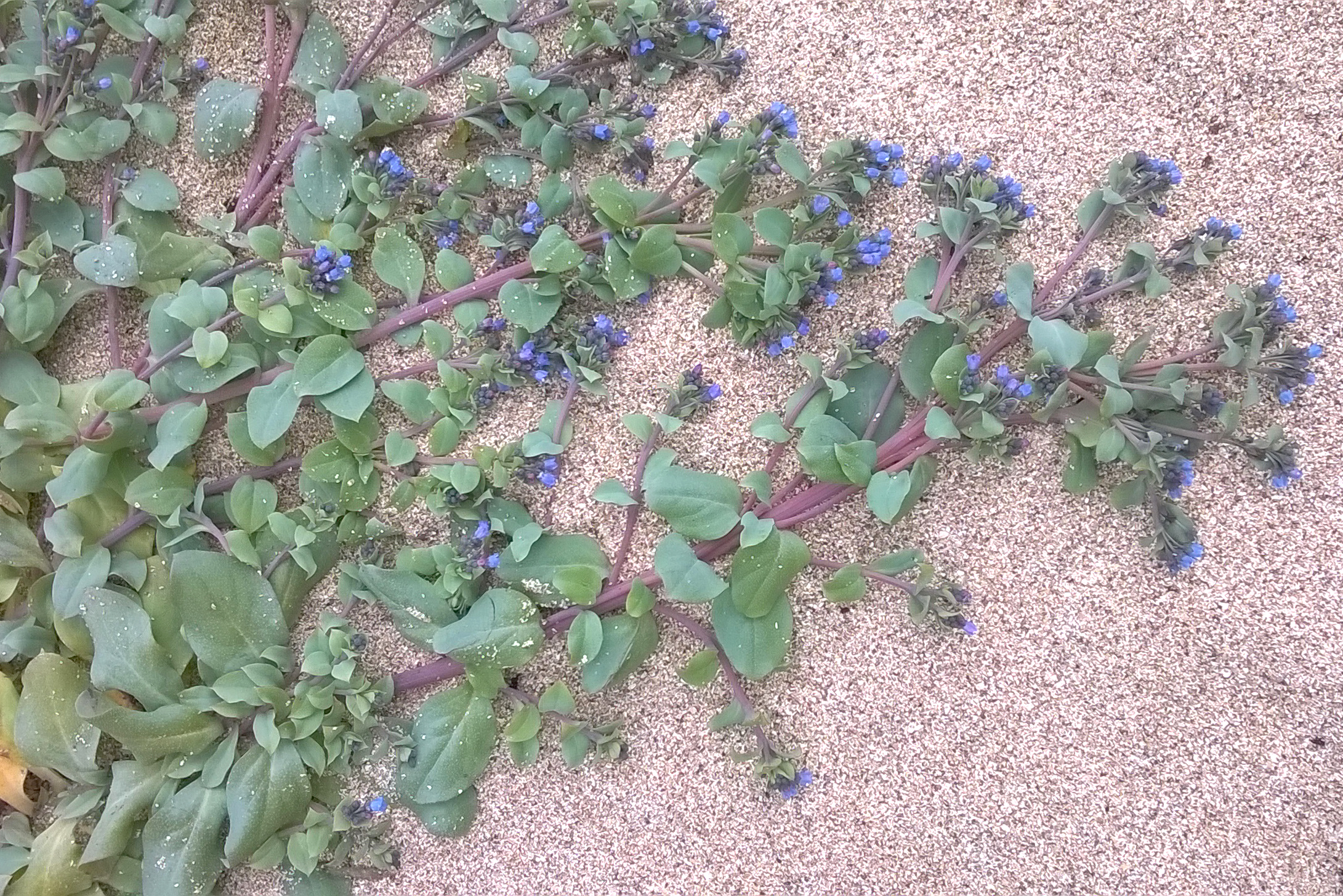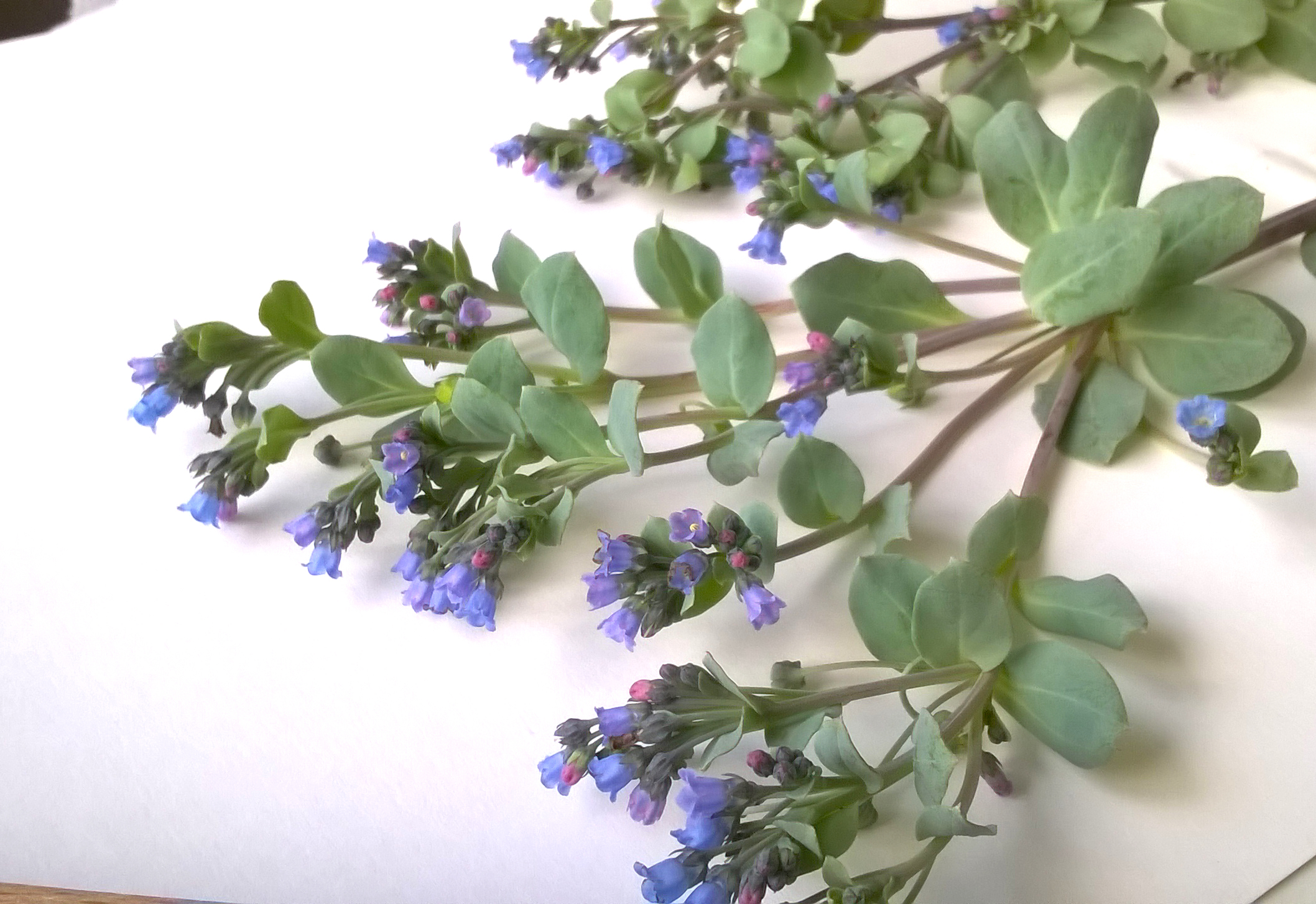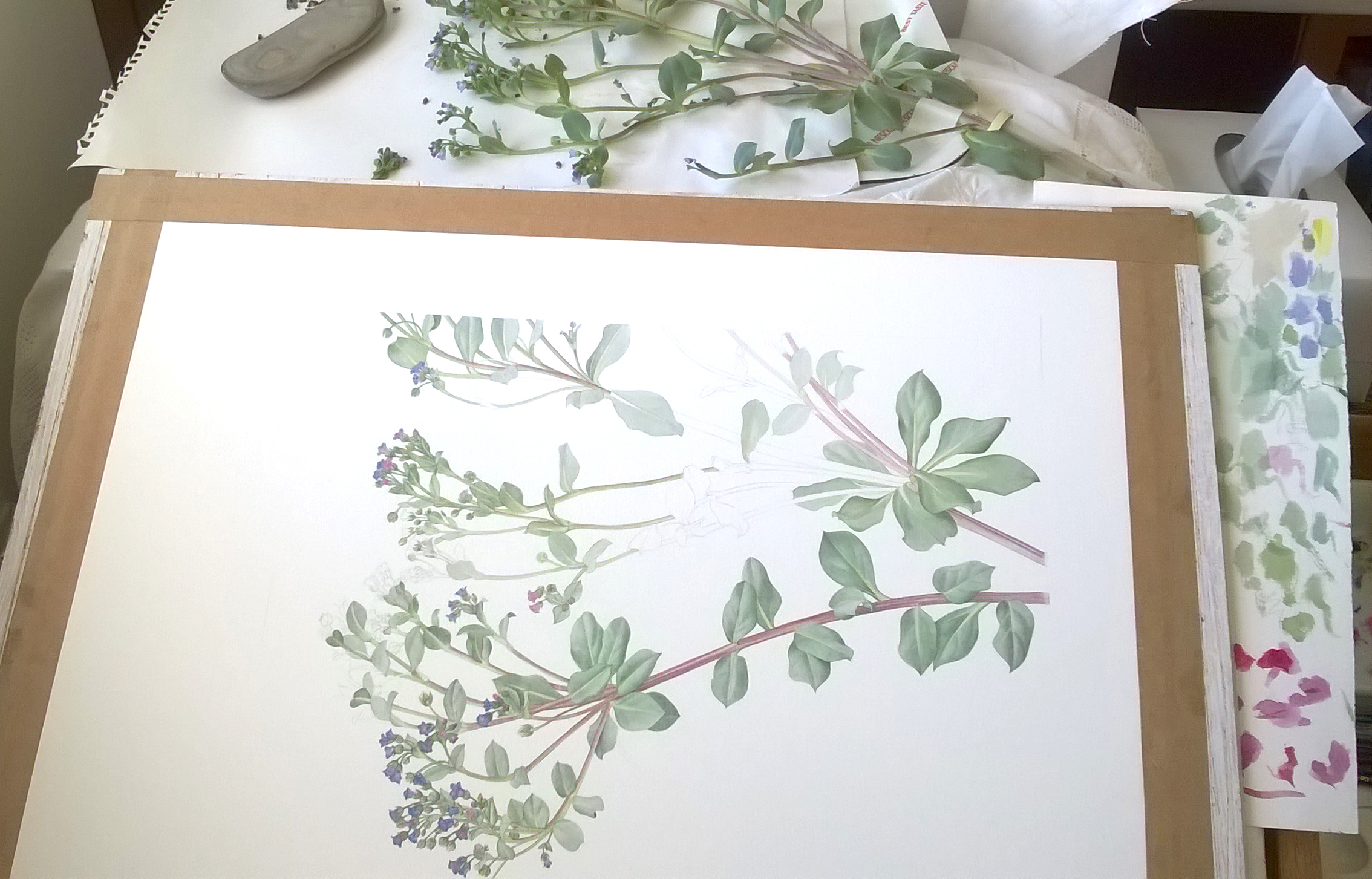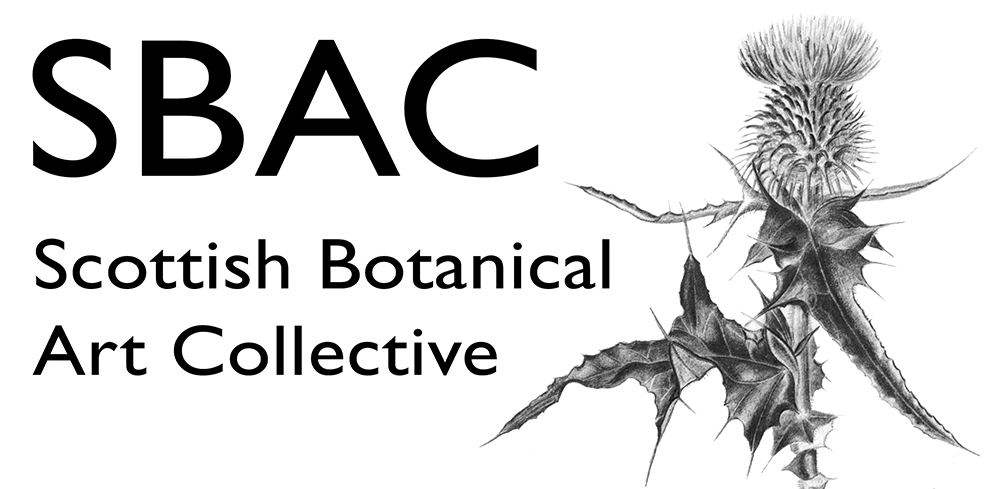Mertensia maritima – Kathy Pickles

This is only the second time I have painted Mertensia. The first time was in 1993, when I was asked if I would like to provide an illustration for a future number of Curtis’s Botanical Magazine. (The illustration finally appeared in the magazine in 2009, as part of a special publication celebrating the 250th anniversary of the founding of Kew Gardens.) The accompanying article, by Steve Alton and Rosemary Fitzgerald, described the study of Mertensia seed and “its history and prospects as a subarctic plant at the southern limits of its range in northern Britain”. Included in the article was a line drawing by Stella Ross-Craig and a photograph of the plant in situ by Martyn Rix, the magazine’s current editor.
I was very keen to paint Mertensia again as it seemed an appropriate subject for the Flora Scotia exhibition. Its distribution around the coastline of the British Isles has declined greatly and Orkney is one of its remaining strongholds.
Tracking down the plant might have been a problem but, luckily, a fellow allotment holder and naturalist, Tim Dean, was able to point me in the direction of a particular beach in South Ronaldsay (the southernmost of the islands joined to the Orkney Mainland by the Churchill Barriers). This was great news for me, a non-driver, as I could get there by bus and a half-hour walk.
Finding the plant proved remarkably easy and there were enough vigorous specimens that taking a couple of stems wasn’t going to have any impact. I wondered at first if I would be able to locate it as the area just below the dunes was covered in frosted orache. However, I needn’t have worried as its wide spreading stems, blue green leaves and intense blue flowers made it instantly recognisable from some distance. It is a very beautiful plant and was just coming into flower so I was able to see it at its very best.

Back in the studio I had to find a way of laying out the specimen so as to mimic its prostrate habit. I solved the problem by using an orchid-holder tube hanging off the edge of a board, which I kept topped up with water at least twice a day. I was then able to spread the plant out and leave it untouched.
The specimen lasted very well and a second trip to collect another stem a couple of weeks later was all I needed.
One thing I discovered was that Mertensia is known as oyster plant as its leaves are edible. They are reputed to taste a bit like oysters and are considered a delicacy in some places. I did try one of the leaves but it wasn’t an experience I would want to repeat in a hurry!

